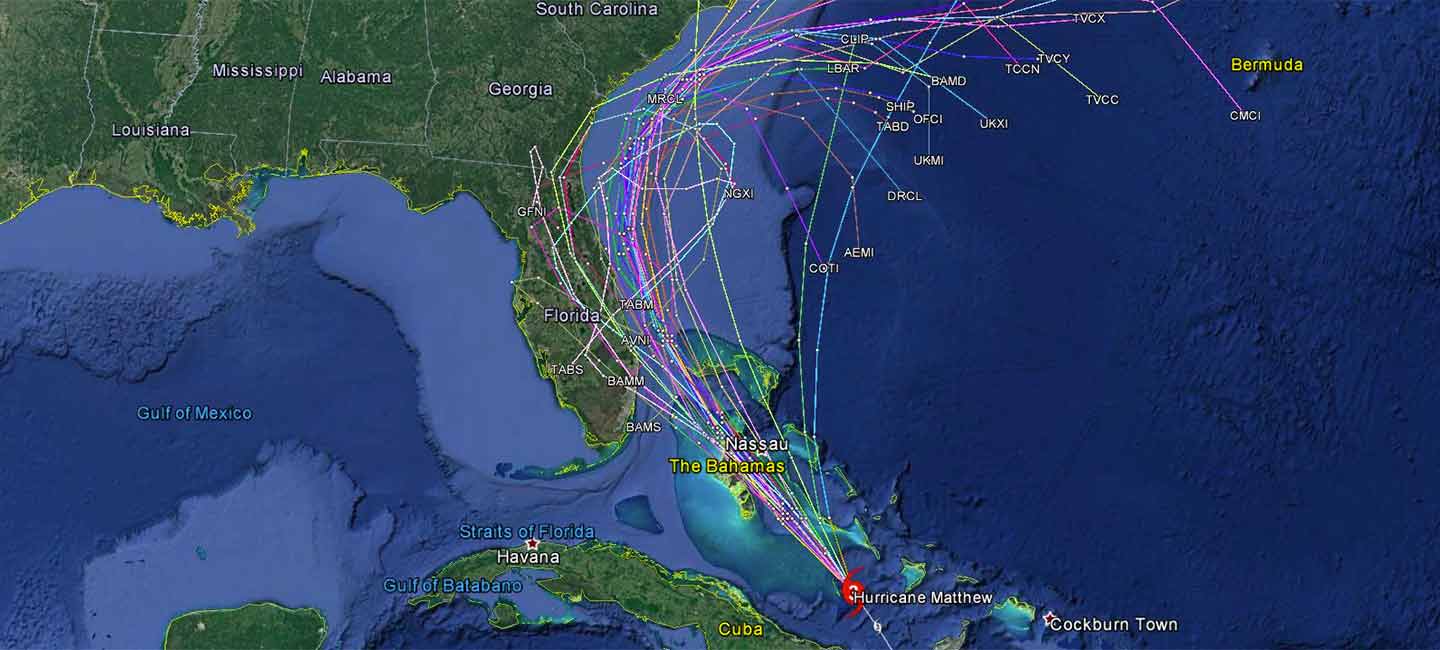Cancer Answers in the Cone of Uncertainty?
As Floridians, we spend summers monitoring TV weather, hoping not to be in a developing storm’s narrowing cone of uncertainty. Each colorful strand of those "spaghetti plots" is the graph of an equation; a mathematical model that predicts the storm’s trajectory based on pertinent weather data run through a computer simulation.
Every hour, as new data come in to each model, the spaghetti strands converge to predict a fairly precise point of landfall.
Tumors are like hurricanes in that way. They are complex, ever-changing systems shaped by a variety of forces. At Moffitt Cancer Center, researchers in the nation’s first Integrated Mathematical Oncology Department use similar equations and sophisticated computer modeling to predict how a patient’s cancer will respond to various types of treatment.
It’s called adaptive therapy.
Equations scrawled on blackboards in the department’s informal shared workspace are meant to replicate the spaghetti plot of a cancer’s growth and predict its future development. The equations aren’t just correlating a tumor’s growth to date. They take into account the mechanisms of cancer biology: why certain types of cancer respond to one drug and not another, how the relative oxygen level in tumor cells can aid or hinder cancer growth and myriad other details.
Unlike hurricanes shaped by weather forces beyond our control, a tumor’s development is also impacted by any of the multitude of treatments that physicians can choose to prescribe. Each treatment can be plugged into the equations to predict its potential effect on a patient’s cancer.
“We can simulate hundreds of thousands of different treatments, different sequences, different combinations - you name it,” explains Dr. Sandy Anderson, chair of the IMO and co-leader of Moffitt’s Center of Excellence for Evolutionary Therapy. “And all of this is done in the computer, without ever actually treating the patient.”
But it’s what happens once a treatment is chosen and administered that makes this approach truly remarkable. Adaptive therapy creates a unique treatment strategy guided by the individual patient’s experience. Updated information about the patient’s treatment response – and how their tumor cells are evolving to survive and thrive - is constantly being fed back through its mathematical models.
It’s like developing a personal spaghetti plot of a patient’s cancer over time, says Dr. Robert Gatenby, co-leader of the Center of Excellence for Evolutionary Therapy. “Instead of ignoring the patient's response to the treatment, you use that information to make a decision about how you should treat them next.”
That allows for a personalized long-term strategy. “There are often many drugs to treat a given type of cancer,” Dr. Gatenby explained. “If you can use those intelligently, maximizing the time to progression with each of them, you could imagine stringing together treatment strategies.
“The models also allow you to think through the sequence of drugs that you're going to give, so that one follows the other in a way that makes sense, as opposed to a sort of ‘whack a mole’ approach.”
The strategy is constantly building on what was done before,” he said, and the approach is already demonstrating progress.
Recently, preliminary results were published from a clinical trial led by Drs. Gatenby and Jingsong Zhang of Moffitt’s Genitourinary Oncology Program. It studied prostate cancer patients using the current standard drug abiraterone on an intermittent schedule. So far, the adaptive therapy approach is showing twice the treatment effect with half the amount of drug.


